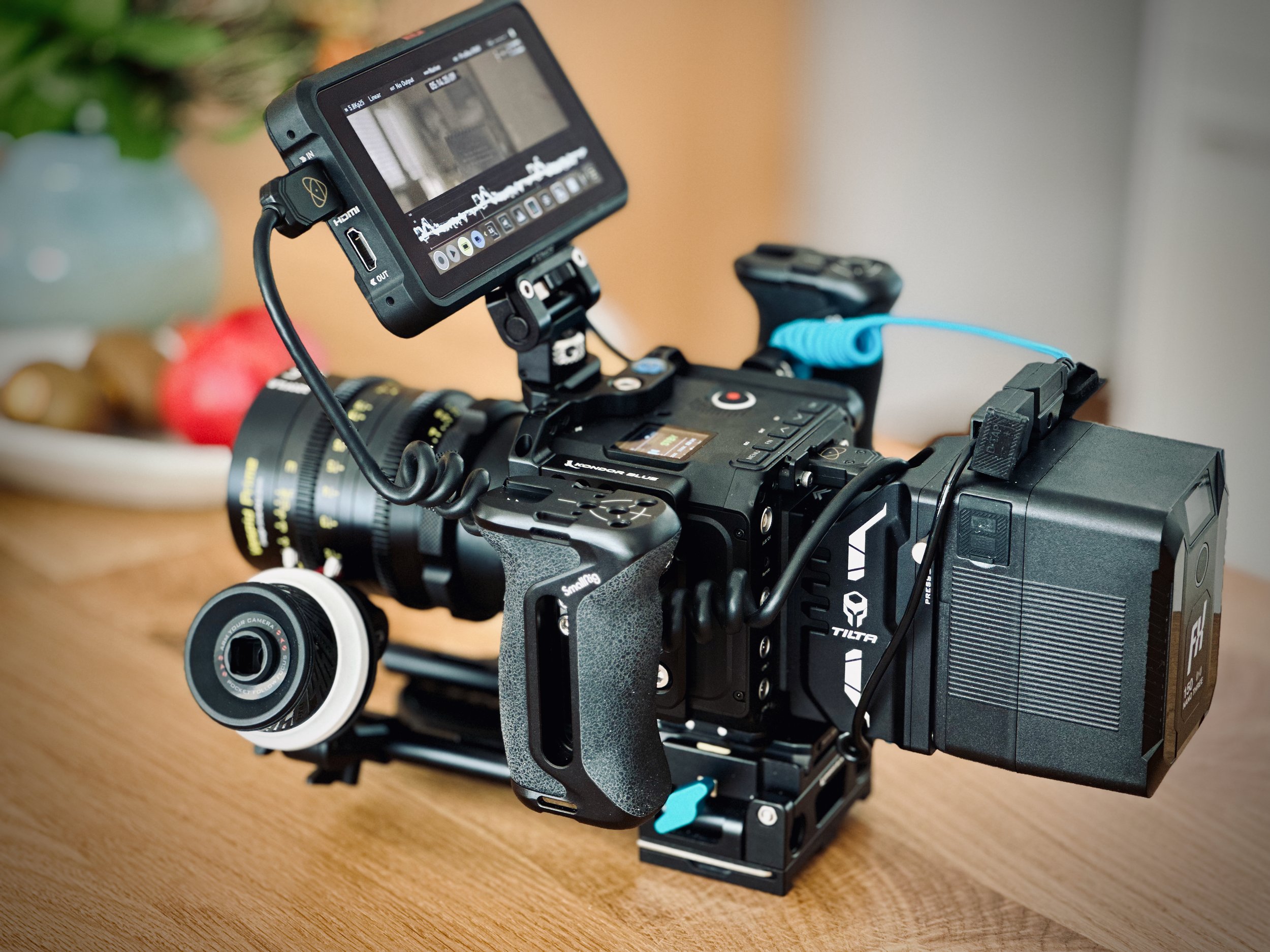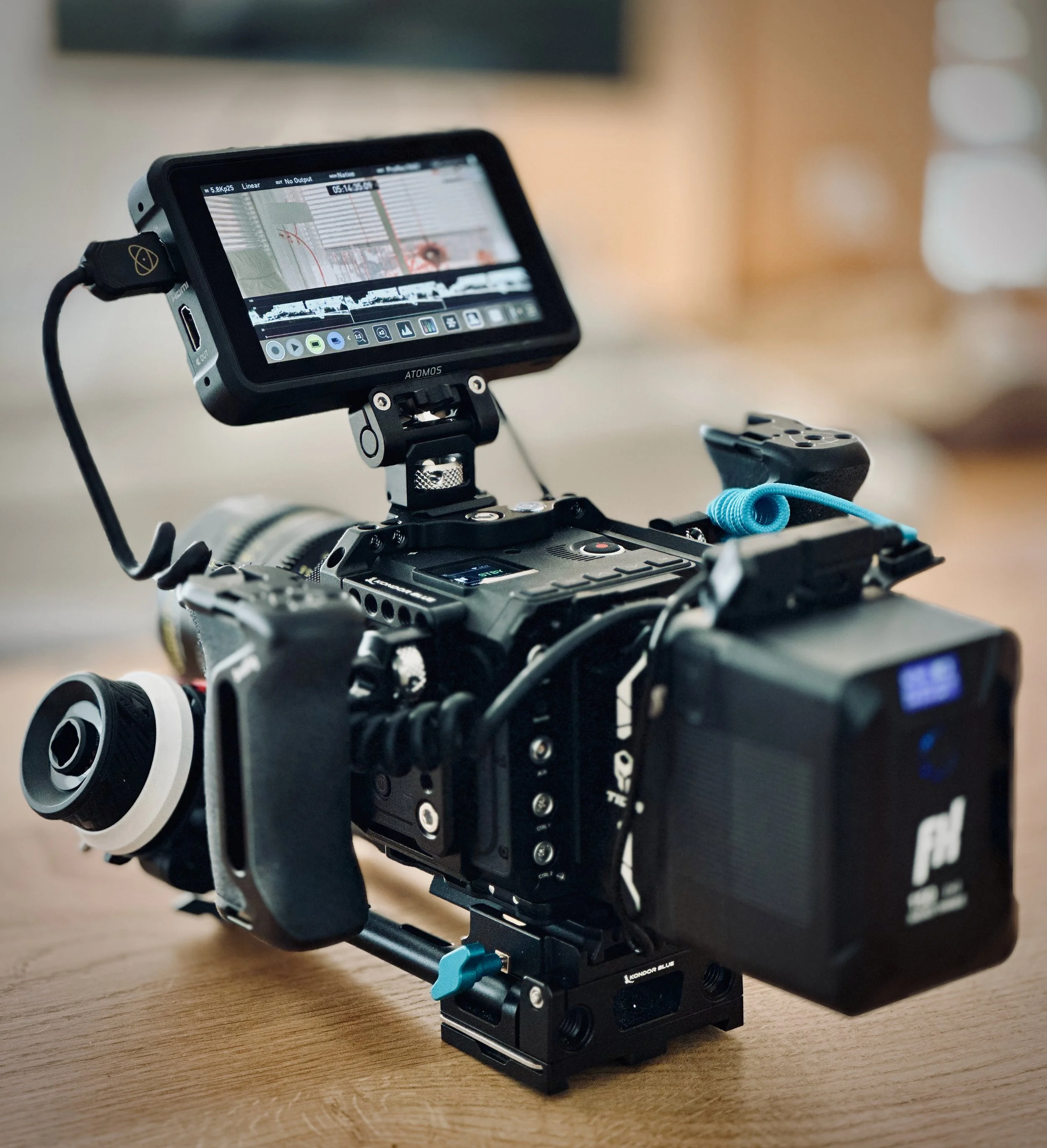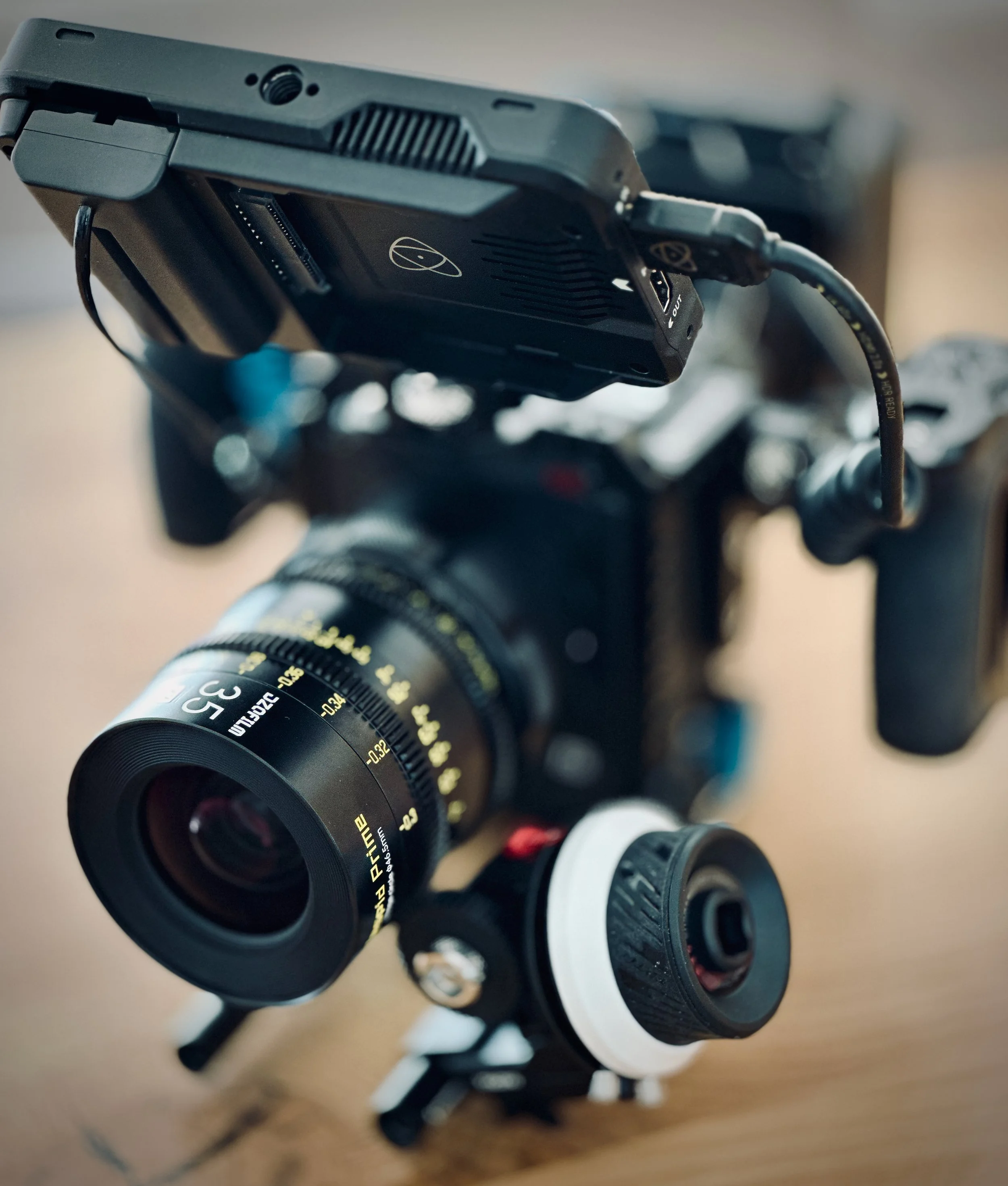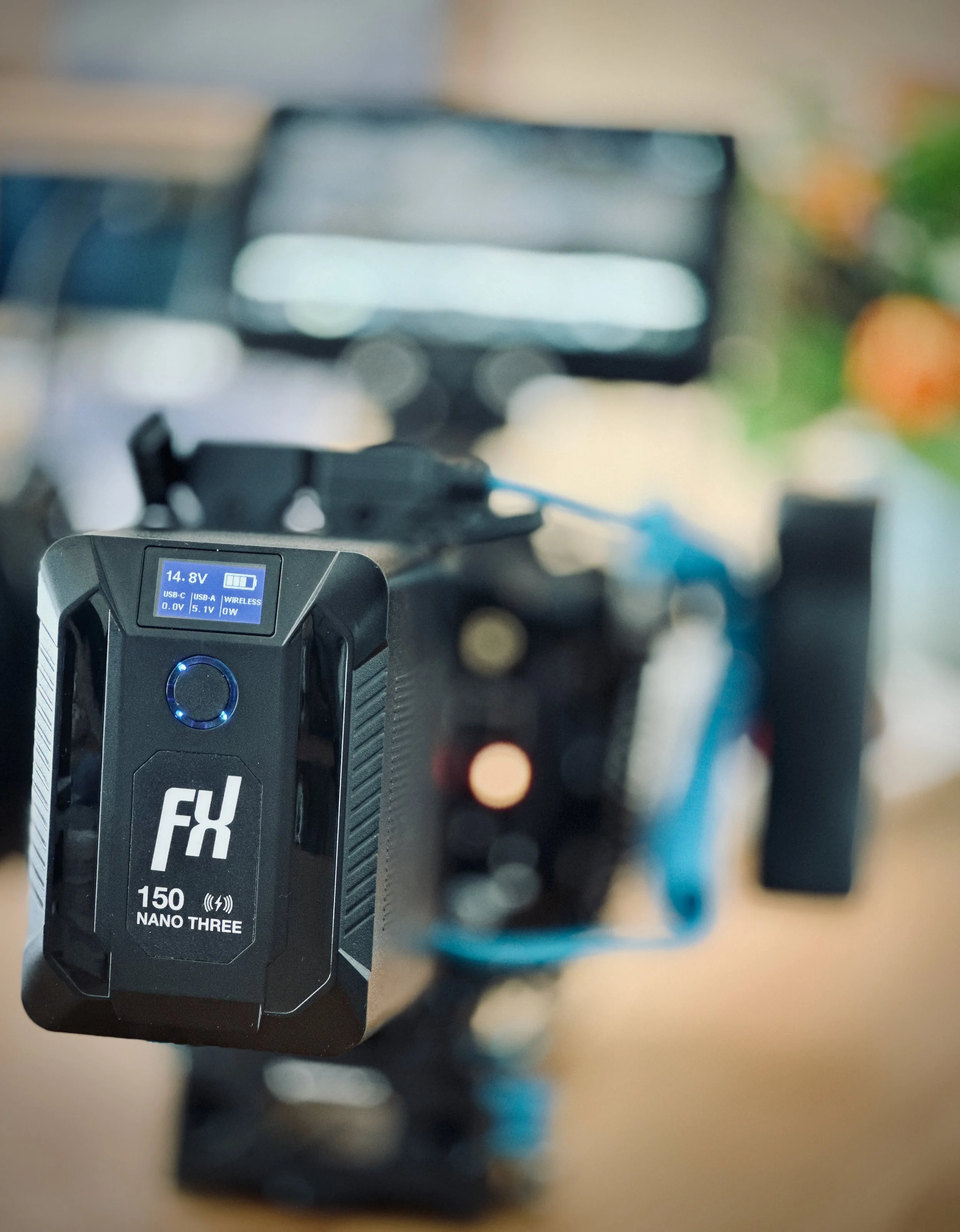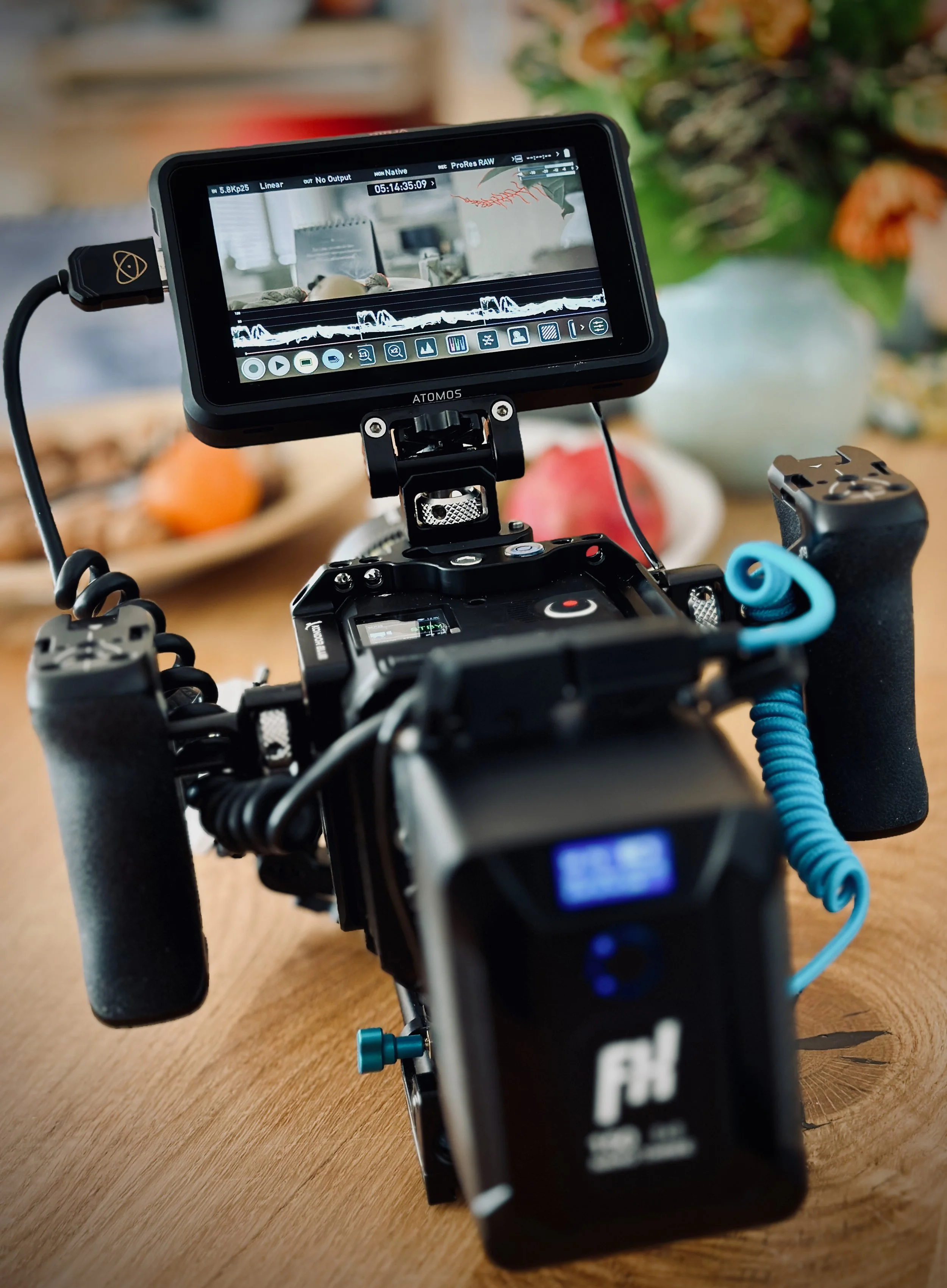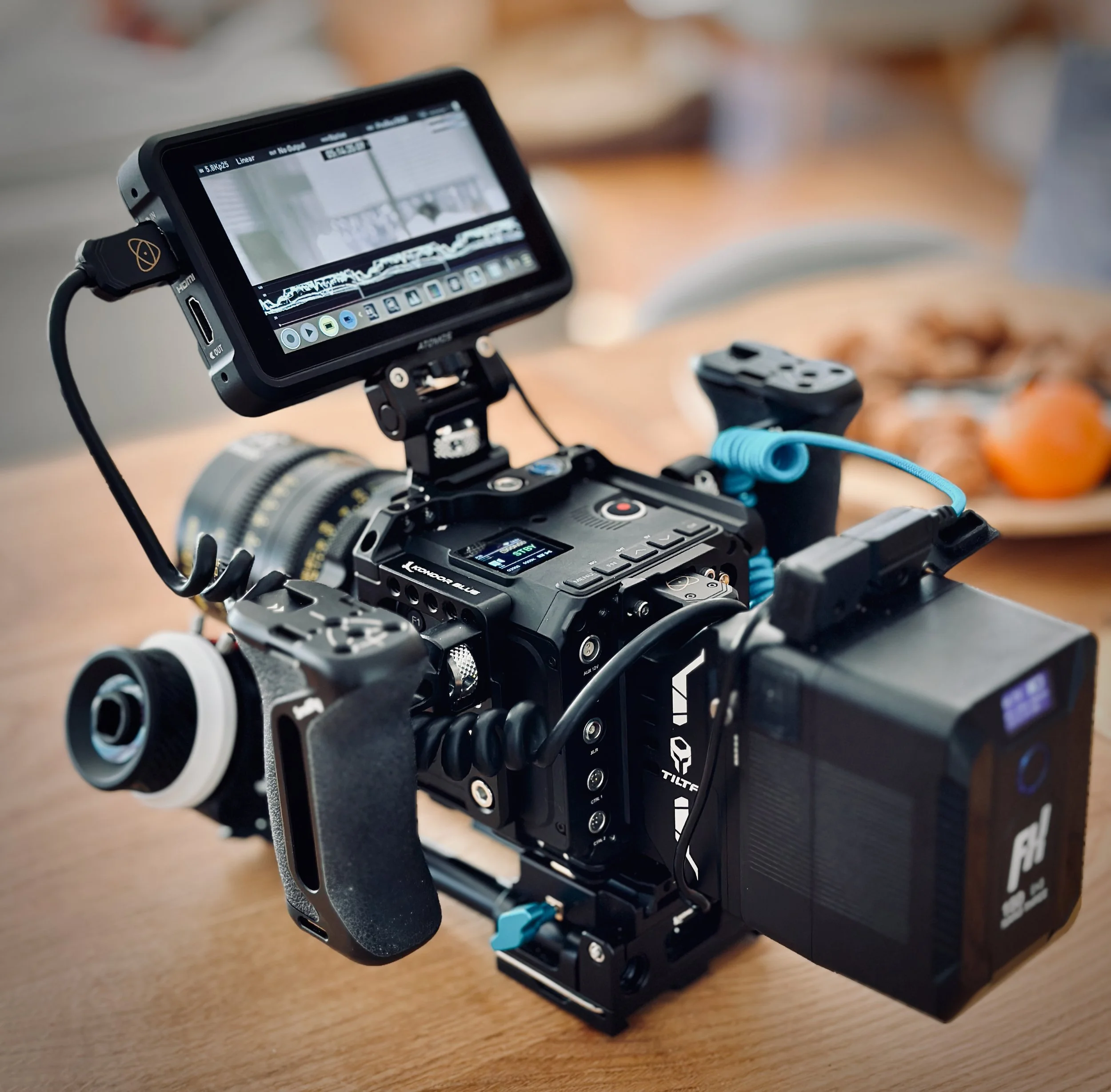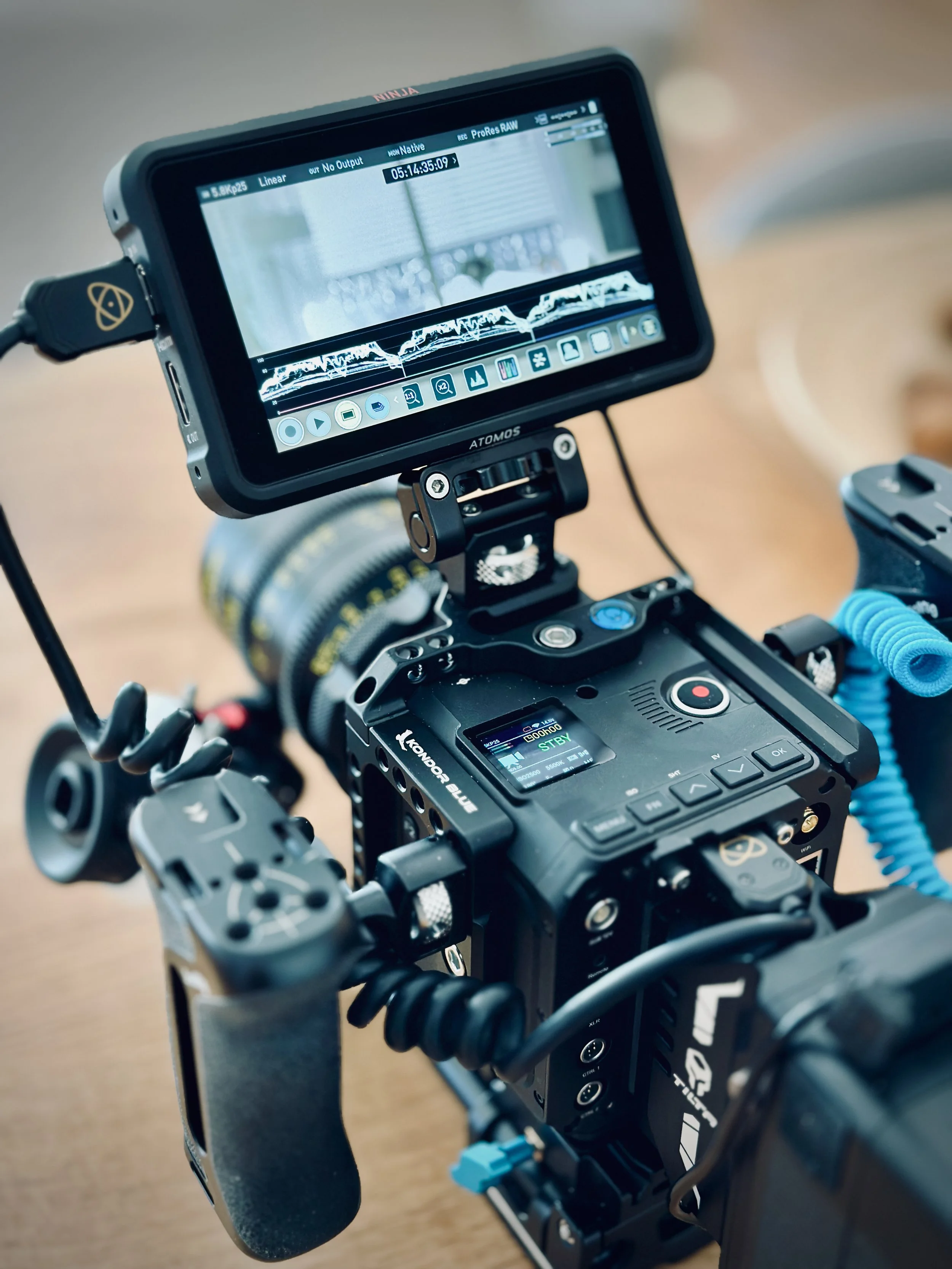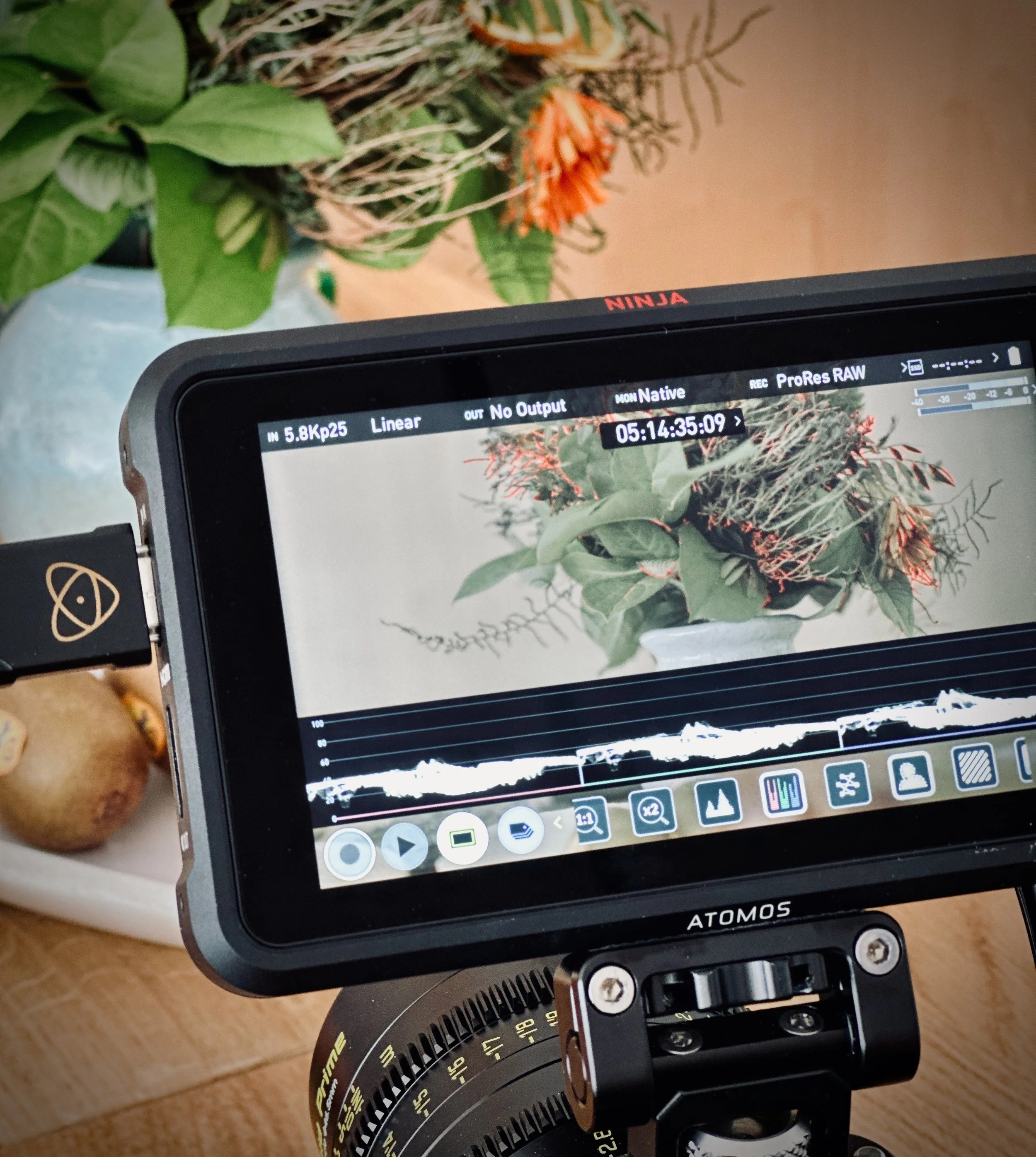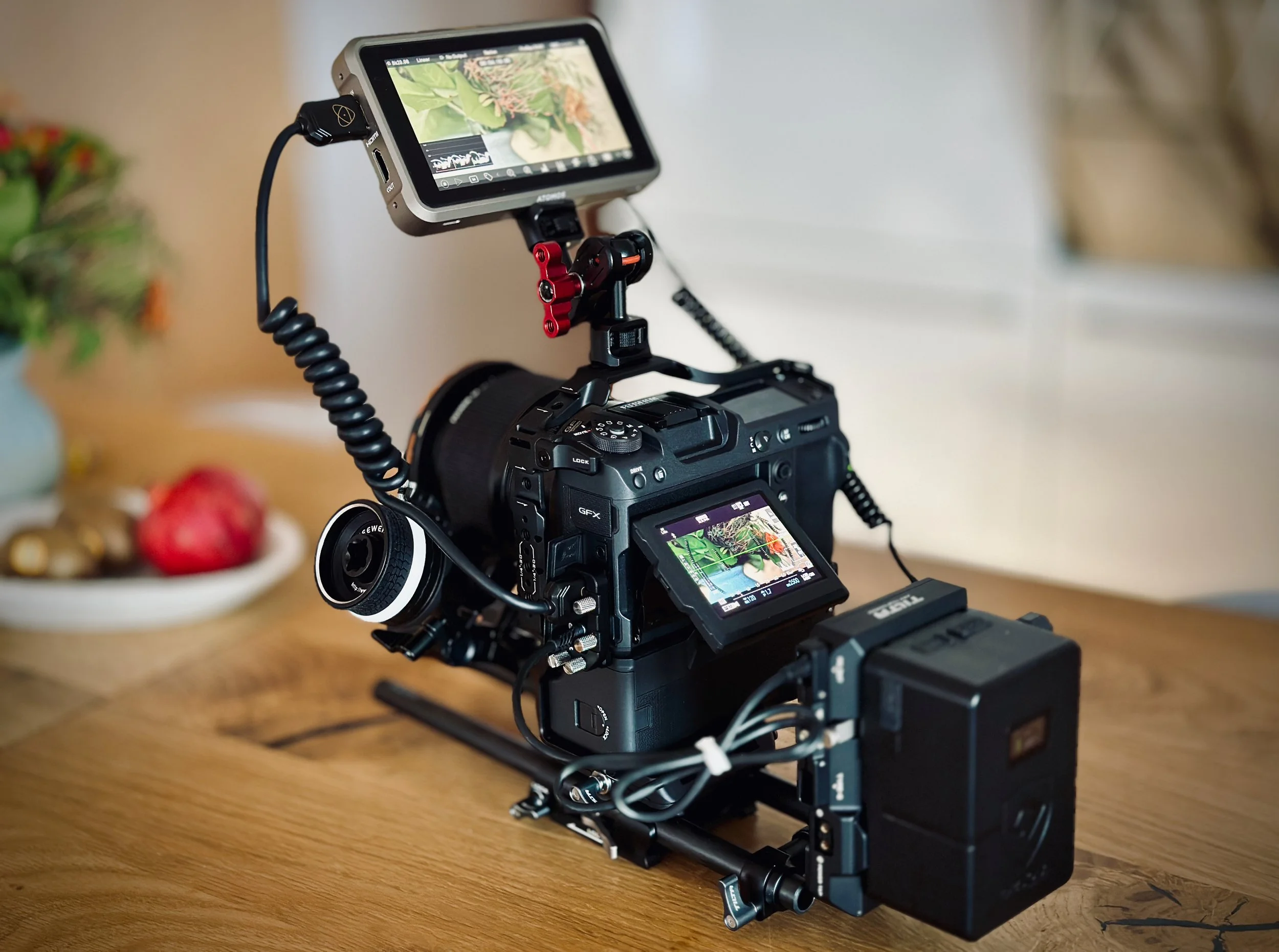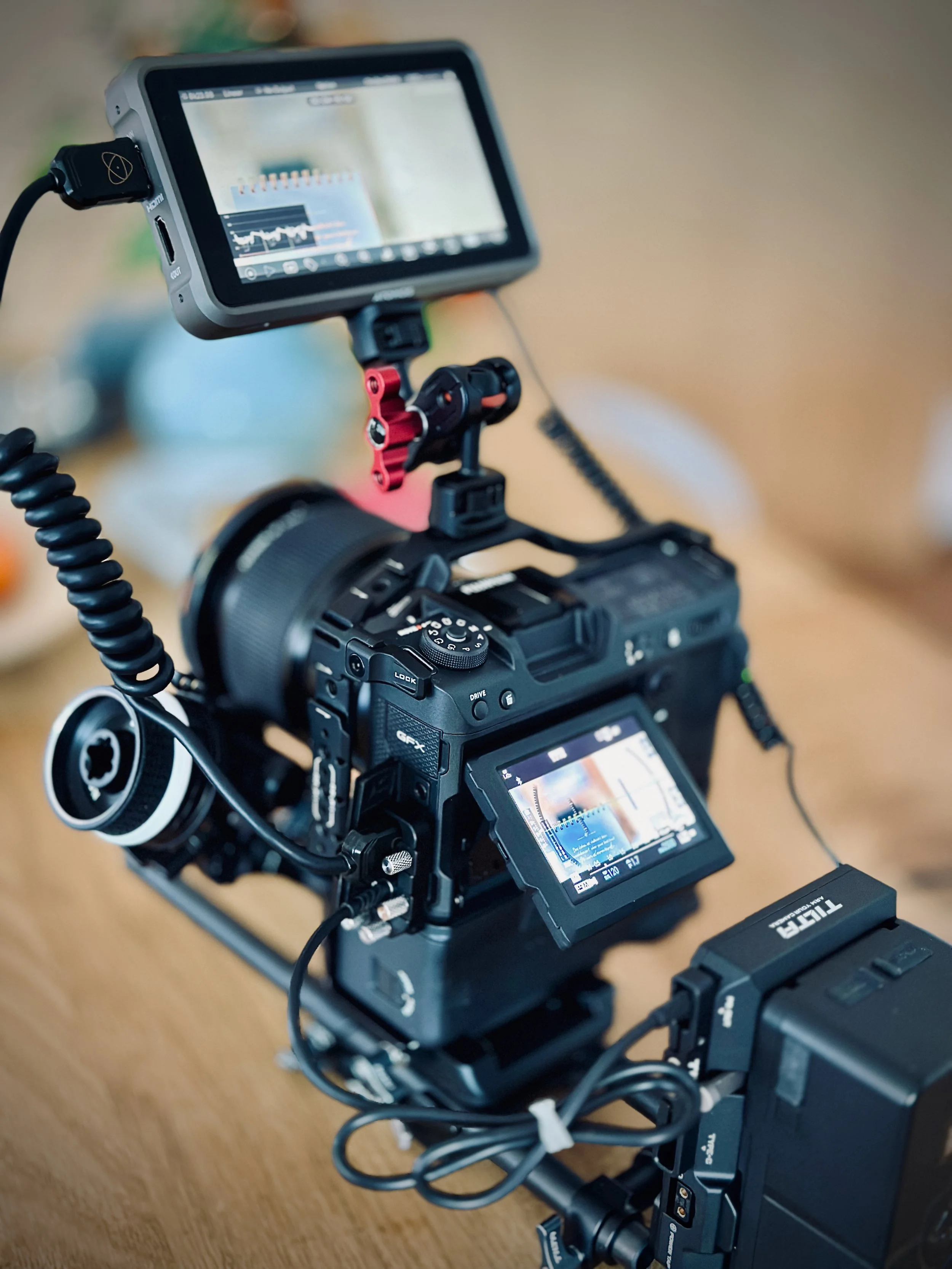Rigged Up for 12-Bit ProRes RAW
Z-CAM F6, Rigged up for 12-Bit ProRes RAW 6K recording!
After a long deliberation process and listing the pros and cons, I have now definitely decided to switch from 10-bit ProRes HQ to 12-bit ProRes RAW. I will only use this codec for future film projects. My existing cinema cameras SONY FX6 (4K) , Z-CAM F6 (6K) and the new FUJIFILM GFX100 II (8K) are perfectly suited for this codec. In addition to 12-bit, ProRes RAW has many advantages in the post-production process with subsequent adjustment of ISO, white balance and shutter speed. What has been standard for me in photography for almost decades is now also the logical consequence for filming.
The disadvantages? ProRes RAW is data-intensive, very data-intensive...e.g.:
ProRes RAW (1,680mb/s ÷ 8000 x 60sec) = 12.6GB file per 60 seconds (4K UHD 60p)
But if I compare the file size of ProRes RAW with ProRes HQ, which I used before, the filze sizes are almost the same. See below more details on “Comparing data rates ProRes RAW vs ProRes Codec”.
Yes, there is always a trade-off. But with a couple of 4TB 2.5"-Solid State Drives at a relatively reasonable price together with the ATOMOS Ninja V recorder you are good to go - and the best thing: the editing in Final Cut goes buttery smooth, even with this big datas!
8K ProRes RAW with Fujifilm GFX100 II
New experience: Filming with a Medium Large Sensor - Fujifilm GFX100 II - Rigged up for 12-Bit ProRes RAW 8K recording with the new ATOMOS Ultra!
New experience: Filming with a Medium Large Sensor - Fujifilm GFX100 II, Rigged up for 12-Bit ProRes RAW 8K recording with the new ATOMOS Ultra!
What is ProRes RAW?
ProRes RAW was introduced by Apple in 2018. It included RAW technology that allows the user to record all of the information that comes through the camera’s sensor. RAW video recording converts a single primary color to all red, green and blue channels for editing. The process of converting is called debayering.
The major drawback of ProRes RAW is the time it takes to edit, and the computing power needed to do so. The files are extremely large because it carries every single piece of information that comes through the sensor. That being said, it is the most beneficial format for color grading for larger budget projects to ensure the best quality.
ProRes RAW Formats
Apple ProRes RAW comes in two sub-formats: ProRes RAW HQ and ProRes RAW. ProRes RAW HQ has file sizes between ProRes 422 HQ and ProRes 444. ProRes RAW allows users to shoot in RAW at a given rate, to better suit their own editing style.
Comparing data rates ProRes RAW vs ProRes Codec
The data rates are variable depending on the content including scene dynamic range and color complexity but as a general guide for estimating file size for a 4K UHD 60p 10-bit file:
ProRes RAW family:
ProRes RAW (1,680mb/s ÷ 8000 x 60sec) = 12.6GB file per 60 seconds
ProRes RAW HQ (2,388mb/s ÷ 8000 x 60sec) = 17.91GB file per 60 seconds
ProRes 4444 family:
ProRes 4444 (2656mb/s) = 19.9GB file per 60 seconds
ProRes 4444 XQ (3976mb/s) = 29.8GB file per 60 seconds
ProRes 422 family:
ProRes 422 LT (821mb/s) = 6.1GB file per 60 seconds
ProRes 422 (1178mb/s) = 8.8GB file per 60 seconds
ProRes 422 HQ (1768mb/s) = 13.3GB file per 60 seconds
In summary, this breaks down to approximately a file storage saving of 37% for ProRes RAW over a comparable ProRes 4444, 58% smaller file size for the ProRes RAW over ProRes 4444 XQ. "We see a 10% smaller file size compared to ProRes 4444 and a 40% smaller file size compared to ProRes 4:4:4:4 XQ which is massive considering that ProRes RAW HQ is the equivalent of an uncompressed RAW format."

